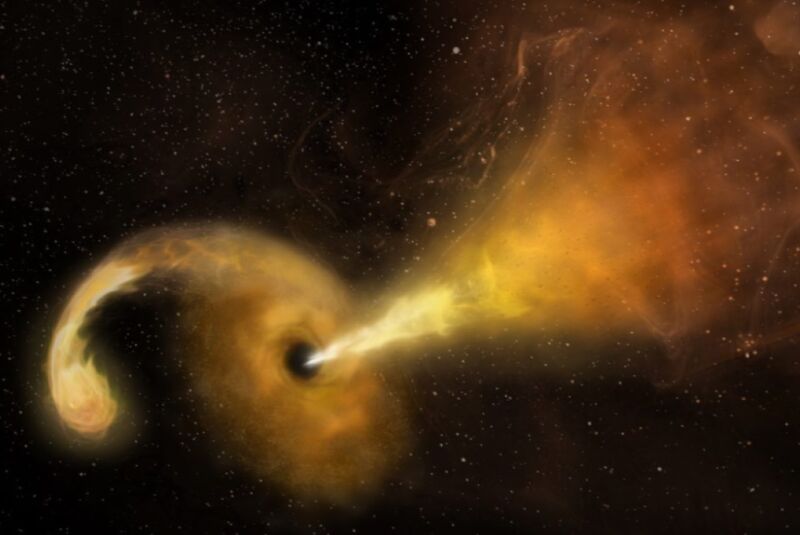Radio astronomers scouring the archives spotted black hole devouring a star

Enlarge / Artist's conception of a Tidal Disruption Event (TDE)-a star being shredded by the powerful gravity of a supermassive black hole. Material from the star spirals into a disk rotating around the black hole, and a jet of particles is ejected.
There are decades of radio astronomy data in the archives of the National Radio Astronomy Observatory (NRAO), and there are still new discoveries lurking within it. Astronomers have spotted the telltale signature jet from a black hole devouring a star several decades ago in archival data collected by the Very Large Array (VLA) telescope in New Mexico. According to a new paper published in The Astrophysical Journal, it's only the second such candidate event discovered in the radio regime; the first was discovered in 2020. The discovery was presented virtually yesterday at a meeting of the American Astronomical Society.
As we've reported previously, it's a popular misconception that black holes behave like cosmic vacuum cleaners, ravenously sucking up any matter in their surroundings. In reality, only stuff that passes beyond the event horizon-including light-is swallowed up and can't escape, although black holes are also messy eaters. That means that part of an object's matter is actually ejected in a powerful jet.
If that object is a star, the process of being shredded (or "spaghettified") by the powerful gravitational forces of a black hole occurs outside the event horizon, and part of the star's original mass is ejected violently outward. This in turn can form a rotating ring of matter (aka an accretion disk) around the black hole that emits powerful X-rays and visible light-and sometimes radio waves. Those jets are one way astronomers can indirectly infer the presence of a black hole. They're known as "tidal disruption events" (TDEs).
Read 6 remaining paragraphs | Comments